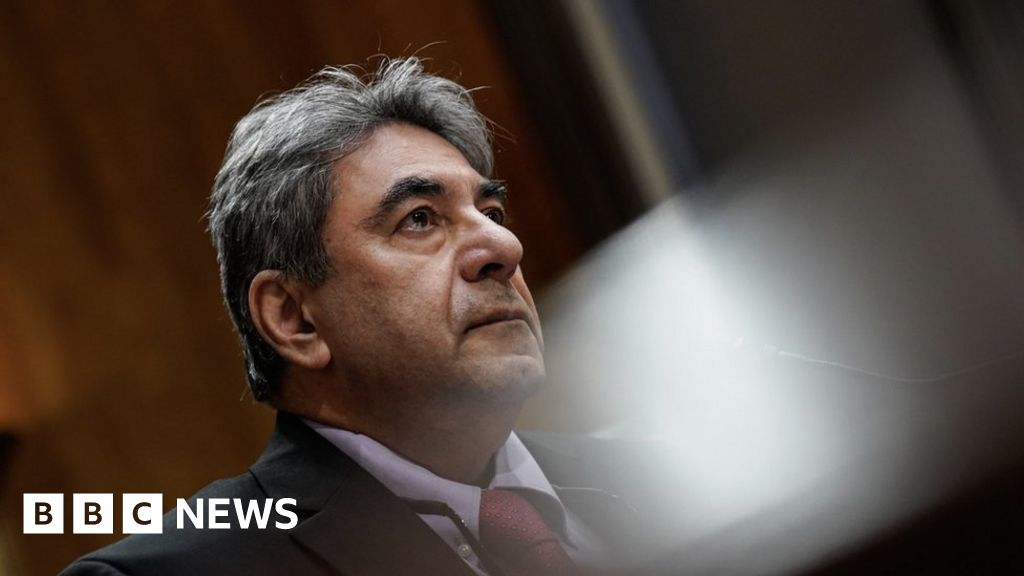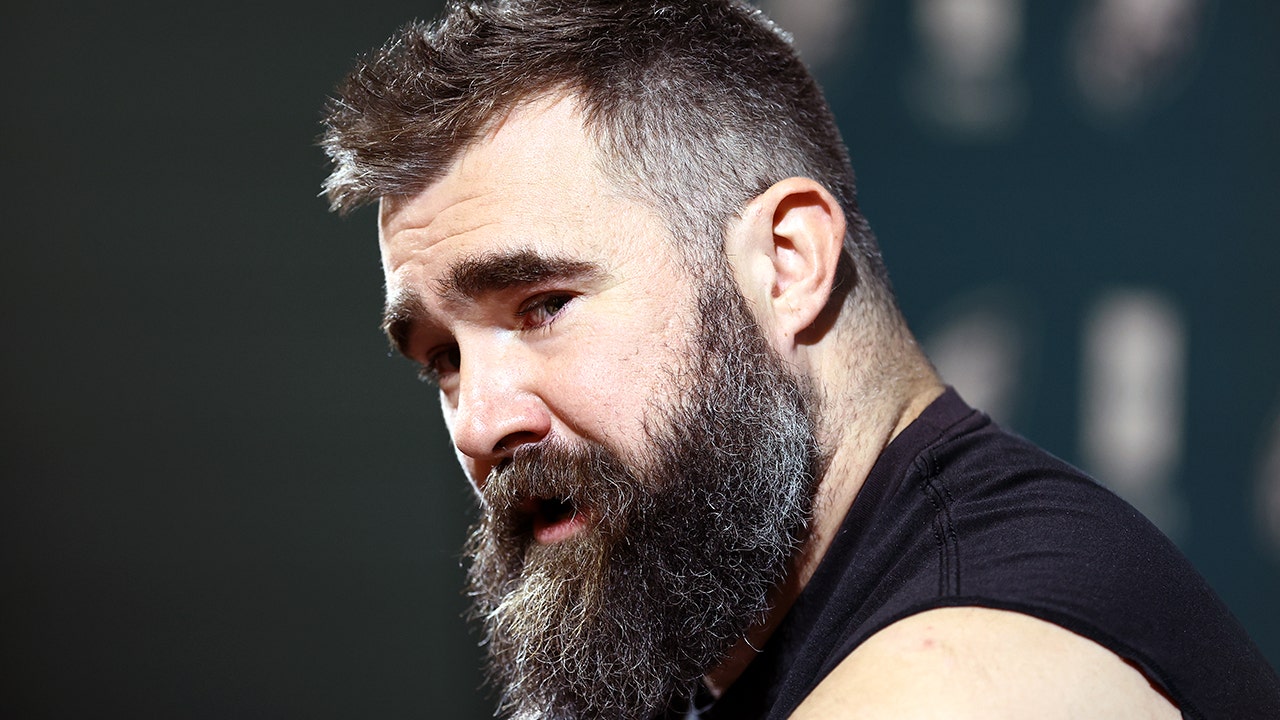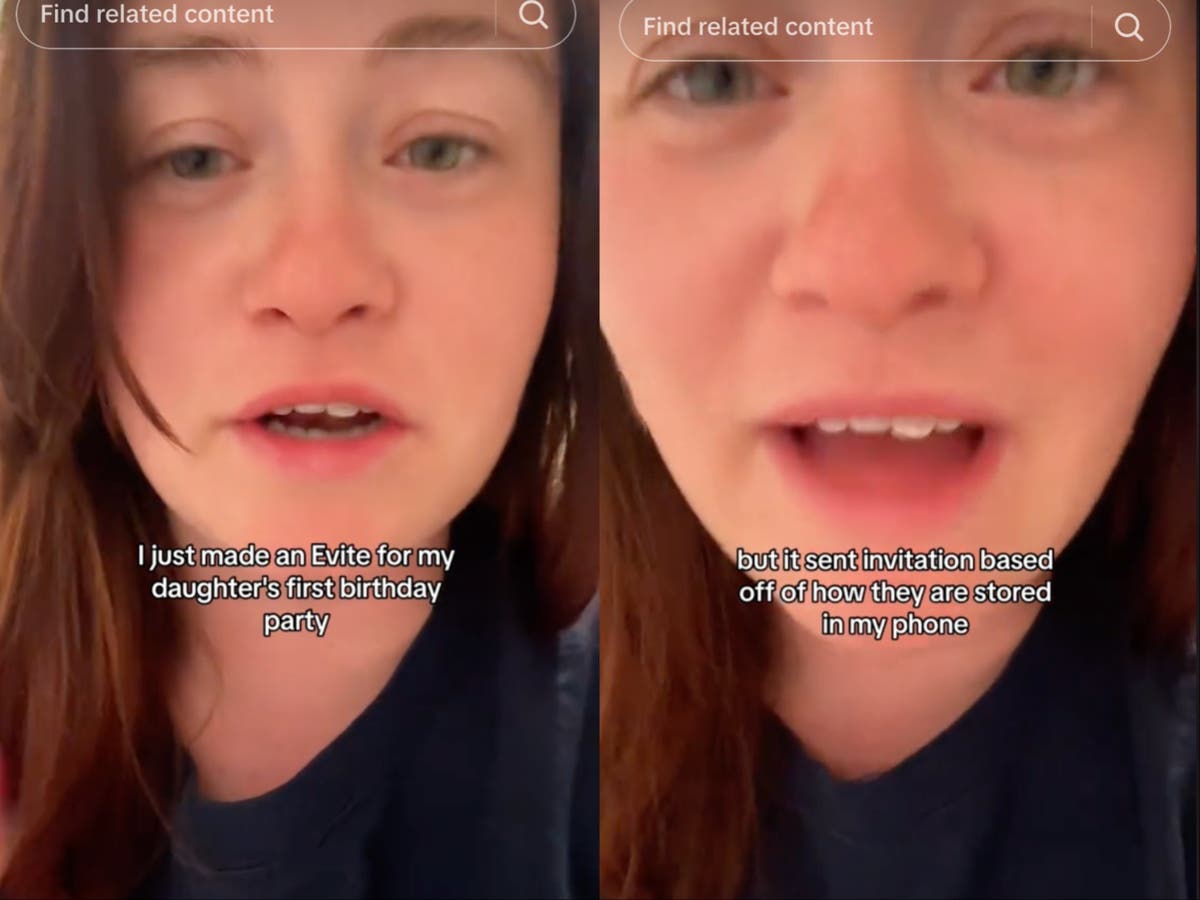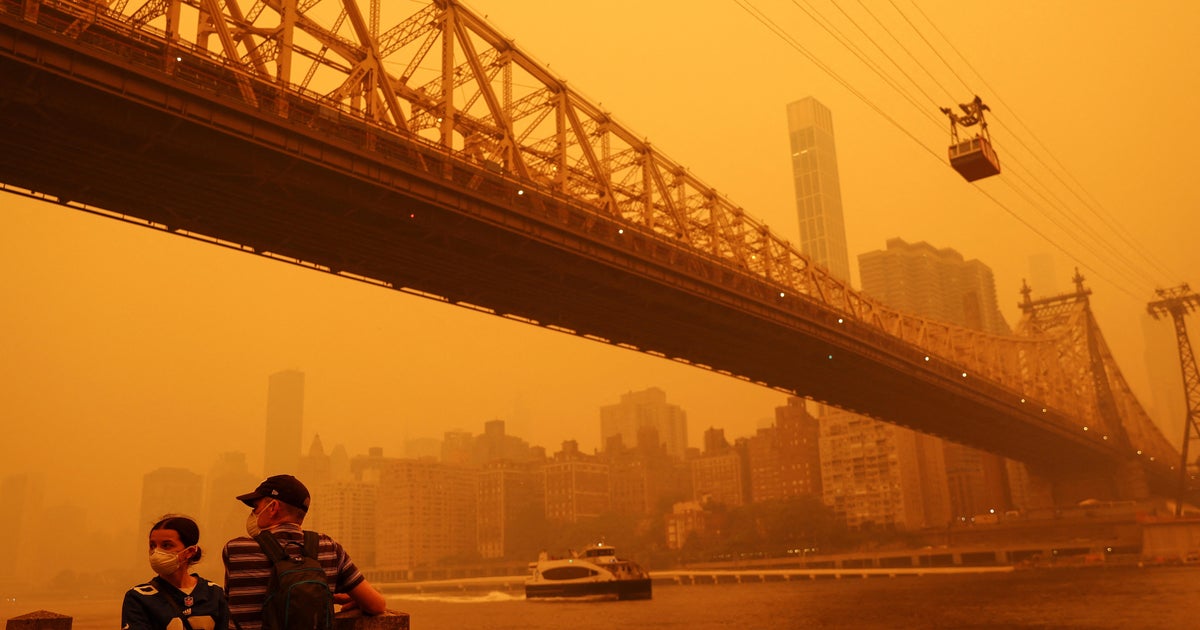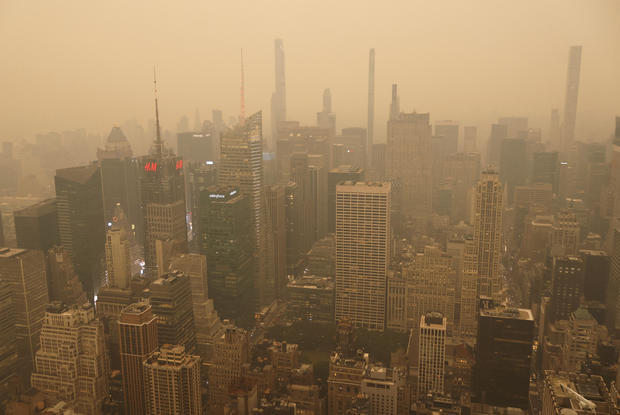As dense smoke from wildfires burning in Canada continued to blanket parts of the U.S. on Wednesday from Minnesota to Massachusetts, and as far south as North Carolina, forecasts suggest air quality will not improve substantially for a few more days.
“We have been in a blocked pattern across North America all week long,” Jen Carfagno, a Weather Channel meteorologist, told CBS News in an email. “That kept an area of upper level low pressure stuck over the Northeast. The flow around the low pressure has been guiding wildfire smoke from Quebec into the Northeast, Great Lakes, and even Ohio Valley and down in the mid-Atlantic.”
Smoke over the U.S. will begin to clear when the weather pattern finally changes, Carfagno said. The shift is expected over the weekend, when forecasts indicate the wind will switch directions “at all levels of the atmosphere and bring in cleaner air,” she added, noting that some rain showers over the Northeast could come before then and bring with them some temporary relief from the smoke.
THE NATIONAL COOPERATIVE INSTITUTE FOR RESEARCH IN THE ATMOSPHERE AT COLORADO STATE AND THE NATIONAL OCEANIC AND ATMOSPHERIC ADMINISTRATION (CSU/CIRA & NOAA)
A grey fog settled into skies over major metropolitan areas in the northeastern U.S. earlier this week, as winds rotated around an ongoing low-level weather system hovering over the Canadian Maritimes, a group of eastern provinces currently experiencing a particularly severe and unusual start to wildfire season. Fires are raging in Quebec, Ottawa and Nova Scotia, where over the weekend federal officials said an uncontained blaze was burning through 100 square miles of land.
Heavy winds are directing smoke downward, past the Canadian border with the U.S. and into a large swath of states.
“An upper low is directing a plume of smoke from Canadian wildfires south and across the East, including urban areas along I-95,” reads an alert shared online by the National Weather Service, which notes that “elevated to critical fire weather conditions can be expected from the Great Lakes to the Mid-Atlantic and Northeast.”
The smoke has affected air quality for millions of people, with northern states like Massachusetts, New York and Pennsylvania experiencing some of the worst. The air quality and pollution in New York City was ranked second among the world’s worst for cities on Wednesday morning, according to the Swiss air quality technology company IQAir.
Gary Hershorn/Getty Images
Stark images of New York City show iconic landmarks enveloped in what looks like thick fog, and the smell of smoke has lingered in the air for several days now. On Monday and Tuesday, people across the Northeast witnessed both the moon, and then the sun, bearing a red-orange glow.
An air quality health advisory was in effect Wednesday for much of New York state, according to the state’s Department of Environmental Conservation. The advisory showed air quality was “unhealthy” for the New York City metropolitan area, Eastern Lake Ontario and Central New York, and “unhealthy for sensitive groups” in Long Island, the Lower Hudson Valley, Upper Hudson Valley and Western New York. Air quality in the Adirondacks was “moderate,” according to the advisory.
Other alerts issued earlier in the week for parts of Delaware, Maryland, Massachusetts, North Carolina, Pennsylvania and Washington, D.C., remained in place, with some still active into the Midwest. On Wednesday, forecasters in Georgia warned residents of the potential for reduced air quality in northern regions.
“Reduced air quality is possible today and tonight due to smoke from Canadian fires,” NWS Atlanta tweeted. “Particularly sensitive groups may be affected in North GA.”
In northern areas, meteorologists anticipate that smoke pollution and reduced air quality will persist through at least Thursday, and some health officials warned that conditions will worsen before they improve.
“At this point, the New York State Department of Environmental Conservation has issued an Air Quality Health Advisory for all five boroughs,” wrote the office of New York City Mayor Eric Adams in a statement released on Tuesday. “While conditions are anticipated to temporarily improve later tonight through tomorrow morning, they are expected to deteriorate further tomorrow afternoon and evening.”
Zachary Iscol, commissioner of New York City’s Office of Emergency Management, said visibility will be very low again on Wednesday afternoon and into the evening, adding that officials expect the smoke will be a multi-day event, CBS New York reported. Further upstate, the National Weather Service Bureau in Binghamton said in a bulletin that residents of the area should expect an “extensive haze,” but added that “the smoke is expected to gradually clear by Thursday.”
Air quality is expected to improve as smoke pollution eases toward the end of the week and into this weekend, said Carfagno.
“The smoke will continue to move with the upper level winds, dissipating somewhat as it gets farther from its source,” she said. “But for people living downstream of those wildfires —both in Quebec and in western Canadian provinces— the wildfire smoke will continue to be a problem. And given this extreme and early start to the wildfire season in Canada, it’s possible this scenario sets up again this summer.”








